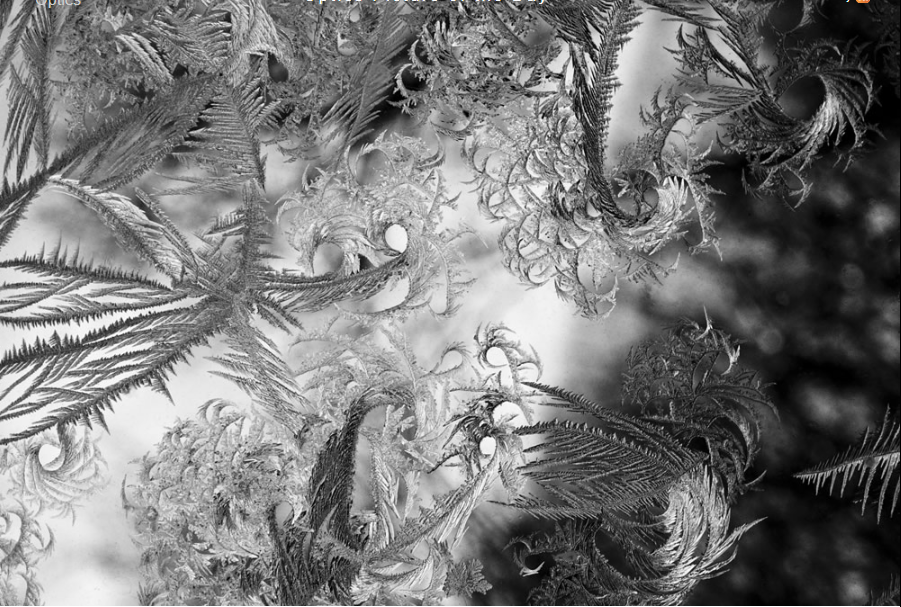Church Window Patterns
Exploring the Intricate Beauty of Church Window Patterns
Church window patterns have long captivated our attention with their intricate beauty. These mesmerizing formations, often referred to as fern frost, are a result of the underlying hexagonal structure of ice. As we delve deeper into the world of atmospheric optics, we discover that the appearance of these frost patterns is influenced by various factors, such as humidity, air temperature, cloud cover, surface texture, and conductivity.
Fern frost is most commonly observed on old single-glazed window panes and other smooth glassy surfaces like car bodywork. It emerges after a cold night, when the surface temperature of the glass drops below that of the surrounding environment. As heat radiates out into the chilly night sky, water molecules in the air condense onto rough nuclei, such as scratches, pits, or dust particles.
Once a tiny ice crystal forms on these nuclei, it begins to spread across the cold surface. Crystal growth is most rapid along the edges rather than on the large smooth planes of facets. Consequently, we observe larger single crystal shapes when the initial growth nuclei are spaced farther apart. This dendritic, treelike growth along the hexagonal crystal directions gives rise to the characteristic ribbed and branched appearance of fern frost.
The formation of these intricate patterns mirrors the creation of snowflakes, which also exhibit complex yet symmetrical shapes. However, the reason behind the sweeping gentle curves that give fern frost its distinct fern leaf shapes remains a mystery. Despite this lack of understanding, it is clear that some overarching mechanism controls the overall shape formation.
To fully appreciate the diversity and complexity of church window patterns, it is essential to consider the interplay of various atmospheric conditions. Humidity levels, air temperature, and cloud cover all play significant roles in shaping the frost formations we observe. Additionally, factors such as surface texture and conductivity contribute to the unique characteristics of each pattern.
While fern frost is a common phenomenon, each instance offers a new opportunity for awe and wonder. No two patterns are exactly alike, highlighting the individuality of nature's artistic creations. As we gaze upon these intricate designs, we are reminded of the delicate balance between temperature, moisture, and atmospheric conditions that gives rise to such breathtaking beauty.
In conclusion, church window patterns, or fern frost, are a testament to the wonders of atmospheric optics. These natural formations, shaped by the hexagonal structure of ice and influenced by various environmental factors, captivate our imagination with their intricate and diverse designs. As we continue to explore the mysteries of nature, we find ourselves in awe of the beauty that surrounds us, even in the most unexpected places. So, next time you encounter a frost-covered church window, take a moment to appreciate the mesmerizing patterns that adorn its surface and ponder the fascinating processes that brought them into existence.

Frosty Church Fern frost on a church window imaged by Tim Stone (more images). �Tim Stone, shown with permission
"The nights have been consistently below zero for the last week or so, and at church this morning I found this single pane glass window with the most unbelievable feather frost I've ever seen.
This is just one of the many jaw-dropping pictures I took of the frost patterns. I'm dumbstruck at the intricate beauty of these natural formations."
All the frost shapes derive from the underlying hexagonal structure of ice. How it appears depends among other things on humidity, the air temperature, whether the sky is clear or cloudy, the texture and conductivity of the surface and so on. In other words frost can be incredibly varied. Fern frost, so named for its leafy fern like swathes, is best seen after a cold night on old single-glazed window panes and on other smooth glassy surfaces like car bodywork.
Fern frost formation starts when the surface cools below that of the surrounding temperature by radiating its heat out to the empty night sky. Water molecules from the air condense onto rough (at an atomic level) nuclei – scratches, pits, dust particles. Once a tiny ice crystal has formed it spreads across the cold surface. Crystal growth is fastest at edges rather than on the large smooth planes of facets. We see large single crystal shapes when the initial growth nuclei are far apart.
The growth is dendritic, treelike, along the hexagonal crystal directions to give the characteristic ribbed and branched appearance. The complex but overall symmetric shapes of snowflakes are similarly produced. Why do the crystal intersections have sweeping gentle curves to give the fern leaf shapes? I don’t know. But whatever controls the overall shapes is a general effect.
Note: this article has been automatically converted from the old site and may not appear as intended. You can find the original article here.
Reference Atmospheric Optics
If you use any of the definitions, information, or data presented on Atmospheric Optics, please copy the link or reference below to properly credit us as the reference source. Thank you!
-
<a href="https://atoptics.co.uk/blog/church-window-patterns/">Church Window Patterns</a>
-
"Church Window Patterns". Atmospheric Optics. Accessed on November 26, 2024. https://atoptics.co.uk/blog/church-window-patterns/.
-
"Church Window Patterns". Atmospheric Optics, https://atoptics.co.uk/blog/church-window-patterns/. Accessed 26 November, 2024
-
Church Window Patterns. Atmospheric Optics. Retrieved from https://atoptics.co.uk/blog/church-window-patterns/.